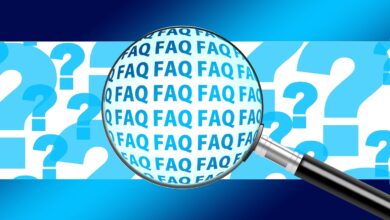Why a Decentralized Internet Might Still Silence Us

Why a Decentralized Internet Might Still Silence Us
Estimated Reading Time: 7 minutes
- Centralized Platforms’ Subtle Silencing: Modern internet platforms use sophisticated, often invisible, methods like shadowbanning and algorithmic manipulation to control content, creating an illusion of free speech while limiting reach.
- Decentralization Isn’t a Cure-All: While decentralized technologies promise resistance to censorship, they introduce new vulnerabilities such as plutocratic governance, protocol-level control by developers, and reliance on centralized infrastructure (ISPs, DNS).
- Social Censorship in Decentralized Spaces: Even without central authority, decentralized communities can silence dissenting voices through tribal dynamics, peer pressure, harassment, and economic exclusion (e.g., token-based sanctions).
- Beyond Technology for True Openness: Achieving a truly open and resilient internet requires more than just technological decentralization; it demands diverse and accountable governance models, transparent infrastructure, and inclusive community norms that value constructive dialogue and dissent.
- Ongoing Vigilance Required: The goal isn’t perfect censorship immunity, which is impractical, but rather building systems that make censorship more transparent, accountable, and subject to broad community input through continuous attention to both technical design and institutional governance.
- The Subtle Silencing of Centralized Platforms
- Decentralization’s Double-Edged Sword: New Paths to Control
- Navigating the Complexities: Actionable Steps for a Truly Open Web
- Conclusion
- FAQ
The internet’s promise of boundless communication and unchecked expression is being challenged daily. What began as a radical experiment in resilient communication has gradually shifted, concentrating power in the hands of a few tech giants. While decentralized alternatives promise a return to core principles, a closer look reveals that the threat of censorship may simply be evolving, not disappearing.
“The internet began as a distributed network designed to resist single points of failure and maintain communication even under attack. The Advanced Research Projects Agency Network (ARPANET) embodied principles of decentralization and fault tolerance that seemed to promise genuine freedom of expression. Each node operated independently without reliance on central authorities. However, the commercialization of the internet transformed this landscape dramatically.
Today’s internet users face new forms of censorship that operate through subtle mechanisms rather than direct prohibition. Platforms exercise control through shadowbanning, algorithmic manipulation, and demonetization — techniques that suppress content without explicitly removing it. Users often remain unaware that their content has been suppressed, creating an illusion of free speech while actually limiting reach and impact.
The rise of decentralized technologies offers potential solutions to these problems. Blockchain-based platforms, peer-to-peer networks, and distributed storage systems promise to return control to users. However, examining these alternatives reveals that decentralization may simply transform rather than eliminate censorship mechanisms.” This crucial observation forms the bedrock of our understanding, highlighting a nuanced challenge beyond simple technological fixes.
The Subtle Silencing of Centralized Platforms
Before diving into decentralization, it’s essential to understand the current landscape of content suppression. Modern platforms have perfected sophisticated methods for controlling information flow, often operating below the user’s conscious awareness. Unlike overt censorship, which removes content outright, these new approaches subtly manipulate visibility and engagement, maintaining an illusion of openness.
Shadowbanning, for instance, represents one of the most insidious forms of modern content control. This technique reduces content visibility without explicit notification, creating what researchers call “algorithmic folklore” around platform behavior. Users might notice a drastic drop in engagement but struggle to discern if it’s due to algorithmic shifts, content quality, or deliberate suppression.
The process often involves several discreet stages: automated flagging, reduced distribution in algorithmic feeds, removal from search results or hashtag displays, limited recommendations to new users, and decreased notification delivery to existing followers. These steps create a graduated system of suppression that offers plausible deniability while effectively curbing reach and impact.
Similarly, algorithmic manipulation allows platforms to shape user behavior and content consumption. Recommendation algorithms can promote or suppress content based on various criteria, including political alignment, advertiser preferences, or internal policy priorities. Functioning as both publisher and judge, these algorithms dictate what millions of users encounter daily. Research indicates that AI moderation systems often misclassify content, with error rates sometimes reaching as high as 70% for specific categories, disproportionately affecting marginalized voices and controversial topics.
Decentralization’s Double-Edged Sword: New Paths to Control
Decentralized systems offer compelling theoretical advantages for preserving free expression. By distributing control across multiple nodes, these networks aim to make centralized censorship both harder and more expensive to implement. Blockchain-based platforms provide content immutability, making deletion nearly impossible once information is on the network. Distributed storage systems like IPFS use content addressing, ensuring files remain accessible even if individual nodes go offline.
Peer-to-peer (P2P) networks eliminate the single points of failure inherent in centralized systems. Users communicate directly, bypassing corporate servers that could otherwise intercept or manipulate data. This architecture inherently distributes both infrastructure costs and control decisions across the network, promising a more robust and resilient communication environment.
However, the shift to decentralized models introduces its own set of vulnerabilities and control mechanisms. The absence of a central authority doesn’t automatically equate to the absence of power structures or censorship.
Plutocratic Governance
Token-based governance systems, common in many decentralized autonomous organizations (DAOs), risk creating a new form of plutocracy. Wealthy actors can accumulate significant voting power proportional to their token holdings, effectively controlling platform policies. This concentration of power might prove even more problematic than traditional corporate governance, which at least faces some degree of regulatory oversight and public accountability. The pseudonymous nature of blockchain systems can allow influential individuals or organizations to obscure their sway through multiple accounts, making it difficult to discern genuine community consensus from coordinated manipulation.
Protocol-Level Control
Decentralized networks rely on underlying protocols that require continuous development and maintenance. The often-small groups of developers who control these protocol updates wield immense influence over network functionality and user capabilities. Changes to core protocols can fundamentally alter censorship resistance, privacy features, and governance mechanisms. Fork decisions, where networks split into competing versions, exemplify how technical disagreements can fragment communities and force users to choose between different governance philosophies, often reflecting deeper divides over censorship and moderation.
Infrastructure Dependencies
Even the most decentralized applications often depend on centralized infrastructure for critical functions. Internet service providers (ISPs), cloud hosting services, and domain name systems (DNS) remain chokepoints where traditional censorship can still occur. The Tornado Cash sanctions demonstrated how regulatory pressure on infrastructure providers can effectively disable decentralized applications, even those built on immutable blockchains. Furthermore, the concentration of blockchain validators and node operators in specific geographic regions creates vulnerabilities to coordinated regulatory action, allowing governments to potentially control significant portions of supposedly decentralized networks through jurisdictional pressure.
Censorship by Culture
Beyond technical and economic factors, decentralized communities are not immune to social dynamics that can silence dissenting voices. These mechanisms operate without formal censorship but achieve similar results through peer pressure and community exclusion.
- Tribal Dynamics: Decentralized platforms often coalesce around shared ideologies, fostering in-group loyalty and sometimes out-group hostility. Users expressing unpopular opinions may face harassment, social isolation, or economic penalties from community members. These informal sanctions can be more effective than formal censorship in discouraging dissent. The pseudonymity common in many decentralized platforms can amplify harassment by reducing accountability for aggressive behavior, allowing users to coordinate attacks or evade consequences.
- Economic Exclusion: Token-based platforms introduce mechanisms like downvoting, tip withdrawal, or marketplace boycotts, enabling economic exclusion. Communities can organize to reduce the financial benefits dissenting voices receive from platform participation, creating indirect censorship through financial pressure. The gamification of many decentralized platforms – through reputation systems, token rewards, and social metrics – further amplifies conformity pressure, making contrarian views economically costly to express.
Navigating the Complexities: Actionable Steps for a Truly Open Web
The transition to decentralized systems provides censorship resistance, but not immunity. While they undeniably make suppression more difficult and expensive, determined actors can still limit speech through various sophisticated mechanisms. This distributed nature of control creates multiple potential points of intervention rather than eliminating them entirely. All content platforms must continually balance competing values: free expression, user safety, legal compliance, and community standards. Decentralized systems don’t remove these trade-offs; they simply redistribute the responsibility for making them.
To truly foster a more open and resilient internet, users and developers must move beyond utopian ideals and engage with the practical challenges:
- Promote Diverse and Accountable Governance Models: Advocate for and build governance systems that move beyond pure token-weighted voting. Explore quadratic voting, reputation-based systems, or liquid democracy models that give a voice to a broader range of participants, not just the wealthiest. Implement mechanisms for transparency regarding large token holders and their voting patterns.
- Support Decentralized Infrastructure and Auditable Protocols: Prioritize applications and protocols that actively work to minimize reliance on centralized ISPs, cloud providers, and DNS. Support projects developing truly distributed infrastructure layers. Demand open-source code and transparent development processes for core protocols, allowing for independent audits and community oversight of potential censorship vectors.
- Cultivate Inclusive Community Norms and Conflict Resolution: Actively participate in shaping community guidelines that emphasize constructive dialogue, respect for diverse viewpoints, and clear, fair processes for dispute resolution. Combat tribalism by promoting empathy and understanding within decentralized spaces. Recognize that social pressure can be as potent a form of censorship as algorithmic manipulation, and work to build cultures that value genuine dissent.
Conclusion
The question of whether decentralized internet systems can eliminate censorship has no simple answer. While these systems offer certain advantages in resisting traditional forms of control, they introduce new vulnerabilities and challenges that may prove equally limiting. The shift from corporate to community governance trades one set of potential abuses for another without guaranteeing better outcomes.
Users seeking freedom from censorship must understand that technology alone cannot guarantee free expression. Social dynamics, economic incentives, and governance structures all profoundly shape how communication platforms operate, regardless of their technical architecture. The goal should not be perfect censorship immunity, which appears to be an impossible ideal, but rather the development of systems that make censorship more transparent, accountable, and subject to broad community input. This requires ongoing attention to both technical design and institutional governance, rather than placing blind faith in any particular technological solution.
Take Action: Engage critically with the decentralized web. Research the governance models of platforms you use, advocate for transparency, and contribute to communities building a more equitable and truly open internet. Your participation is crucial in shaping its future.
FAQ
Q1: What is shadowbanning?
Shadowbanning is a method of content control where a platform reduces the visibility of a user’s content or interactions without explicitly notifying them. It can involve reducing distribution in algorithmic feeds, removing content from search results, or limiting recommendations, making it difficult for users to know their content has been suppressed.
Q2: How do centralized platforms censor content subtly?
Centralized platforms employ techniques like shadowbanning, algorithmic manipulation (promoting or suppressing content based on various criteria), and demonetization. These methods control information flow by subtly manipulating visibility and engagement, rather than direct removal, maintaining an illusion of free expression.
Q3: Does decentralization eliminate all forms of censorship?
No, decentralization does not eliminate all forms of censorship. While it makes traditional centralized censorship harder, it introduces new vulnerabilities and control mechanisms such as plutocratic governance, protocol-level control by developers, reliance on centralized infrastructure (ISPs, DNS), and social censorship within communities.
Q4: What are the new forms of censorship in decentralized systems?
New forms of censorship in decentralized systems include plutocratic governance (where token holders wield disproportionate power), protocol-level control by small developer groups, infrastructure dependencies on centralized services, and “censorship by culture” through tribal dynamics, peer pressure, harassment, and economic exclusion within communities.
Q5: How can users contribute to a truly open decentralized web?
Users can contribute by promoting diverse and accountable governance models, supporting decentralized infrastructure and auditable protocols, and cultivating inclusive community norms that value constructive dialogue and fair conflict resolution. Engaging critically and actively participating in shaping these systems is crucial.





